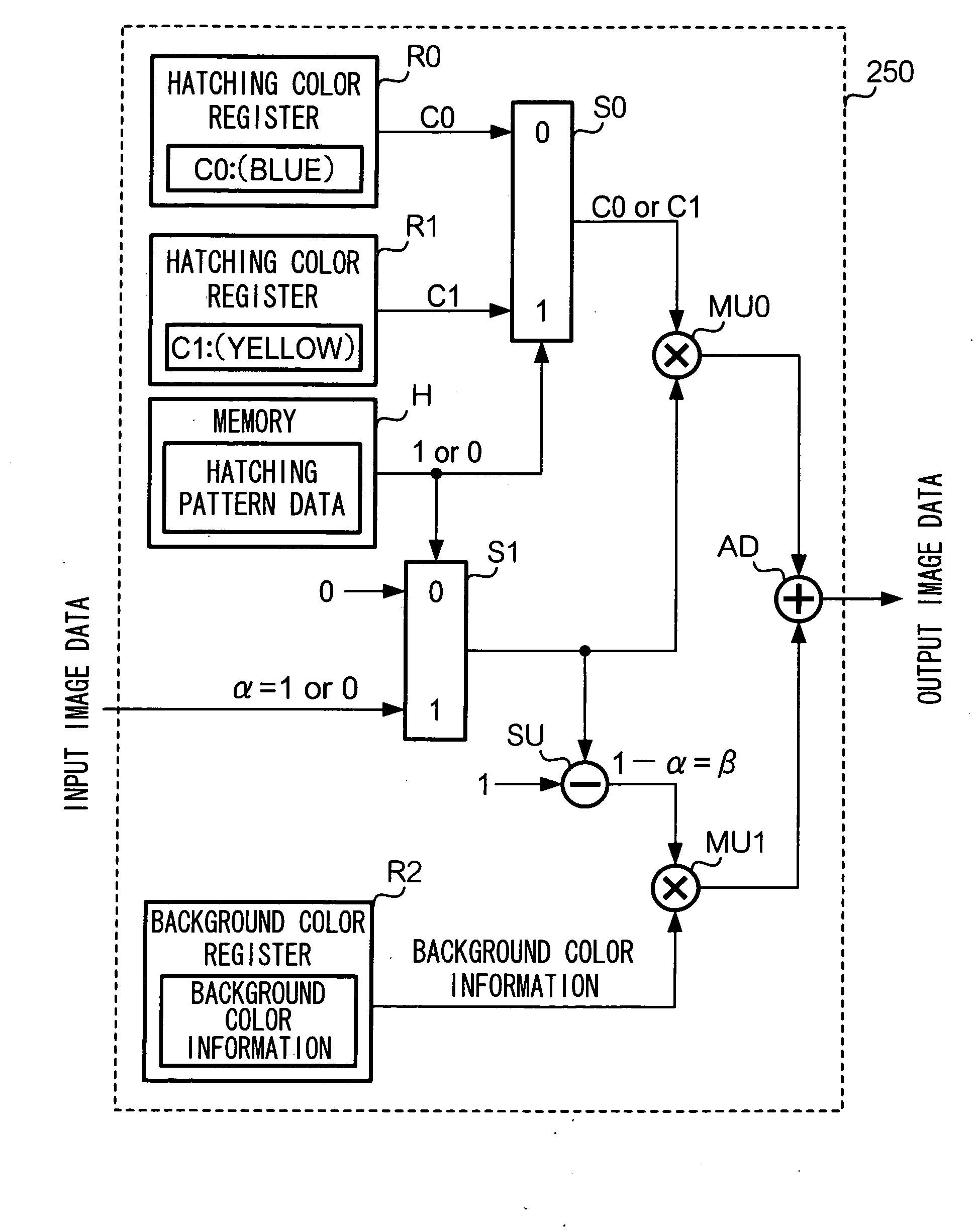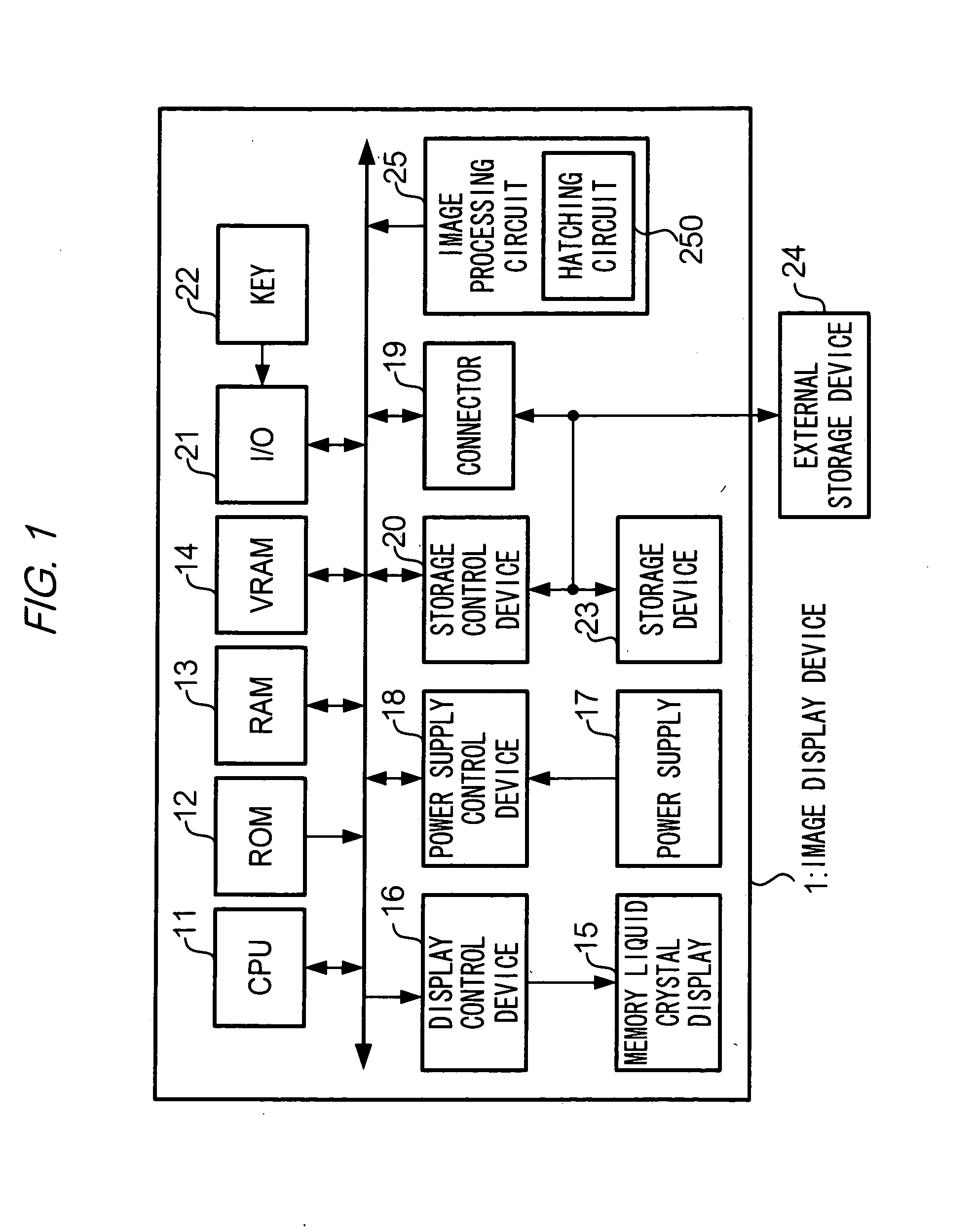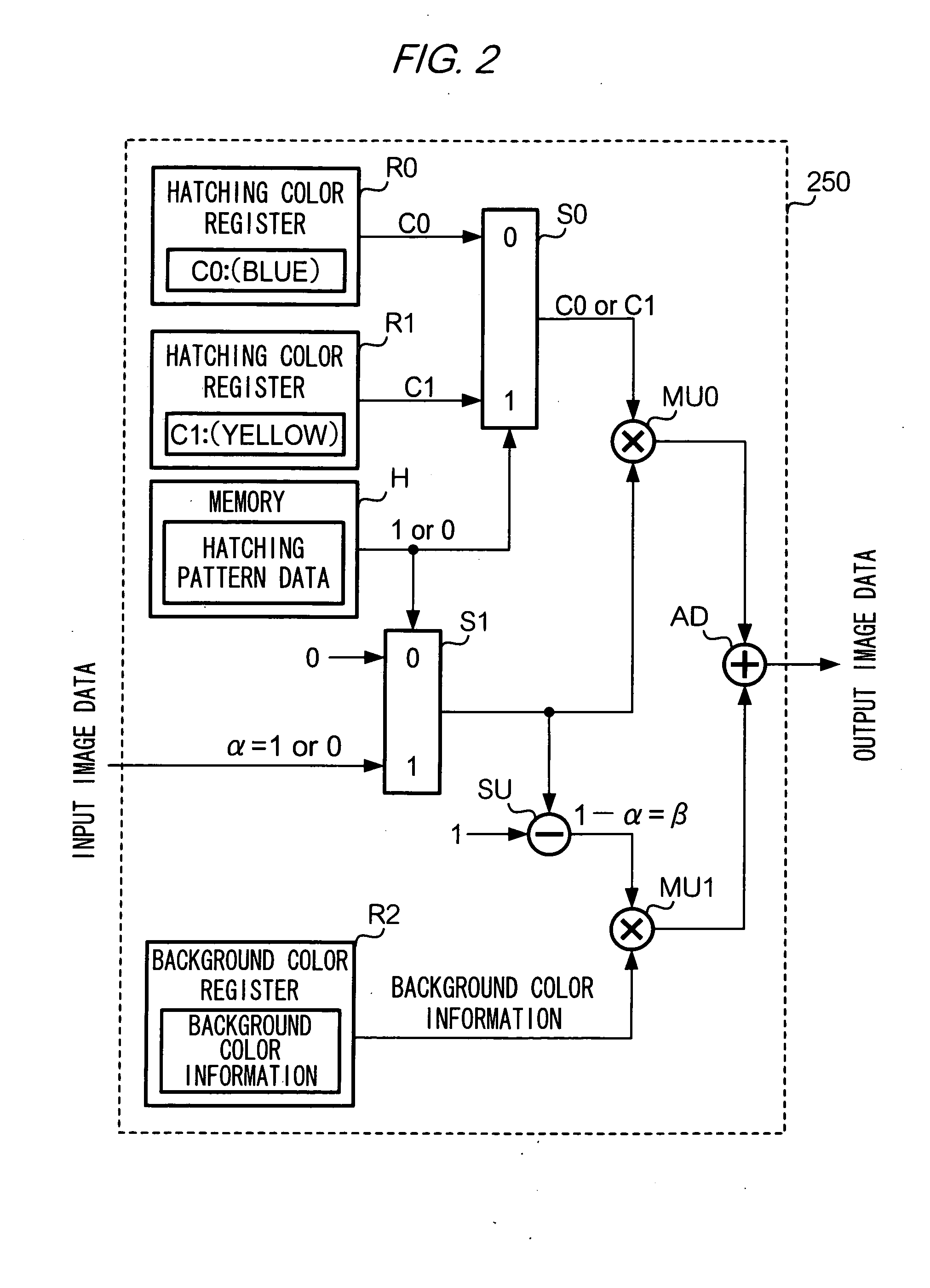Image processing circuit, display device, and printing device
a technology of image processing circuit and display device, which is applied in the direction of computing, instruments, and filling the planer surface with attributes, etc., and can solve problems such as the inability to achieve hatching processing
- Summary
- Abstract
- Description
- Claims
- Application Information
AI Technical Summary
Benefits of technology
Problems solved by technology
Method used
Image
Examples
Embodiment Construction
Exemplary Embodiment
[0036]In an exemplary embodiment described below, a processing for laying out plural shape-images arrayed in an image area will be referred to as “hatching”. The plural shape-images which are arrayed in this processing may all be the same as each other or different from each other. For example, a form of hatching known as “oblique line shading” can be achieved by laying out repeatedly at uniform intervals, line segment images extending in one identical direction. Another form of hatching commonly known as “cross shading” can be achieved by laying out repeatedly at uniform intervals, line segment images, respectively extending in two different directions. Yet another form of hatching can be achieved by laying out alternating shapes of a heart and a clover or by randomly laying out abstract shapes which are all different from each other. That is, shape-images used for hatching can be of any size or form, and any number of shape-images may be used for hatchings.
[003...
PUM
 Login to View More
Login to View More Abstract
Description
Claims
Application Information
 Login to View More
Login to View More - R&D
- Intellectual Property
- Life Sciences
- Materials
- Tech Scout
- Unparalleled Data Quality
- Higher Quality Content
- 60% Fewer Hallucinations
Browse by: Latest US Patents, China's latest patents, Technical Efficacy Thesaurus, Application Domain, Technology Topic, Popular Technical Reports.
© 2025 PatSnap. All rights reserved.Legal|Privacy policy|Modern Slavery Act Transparency Statement|Sitemap|About US| Contact US: help@patsnap.com



